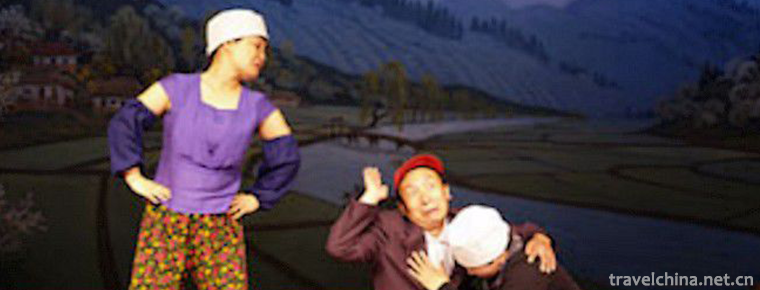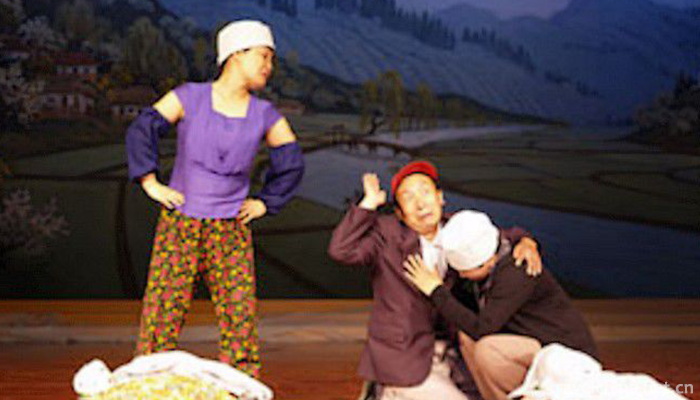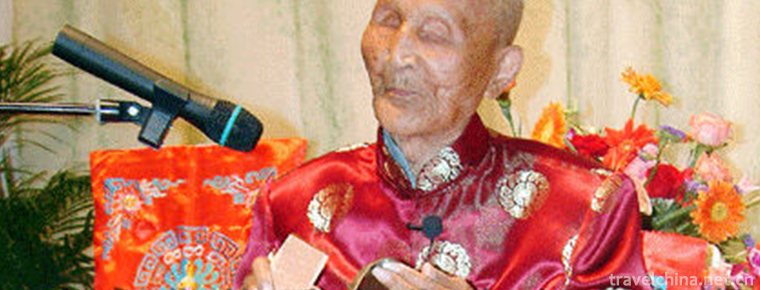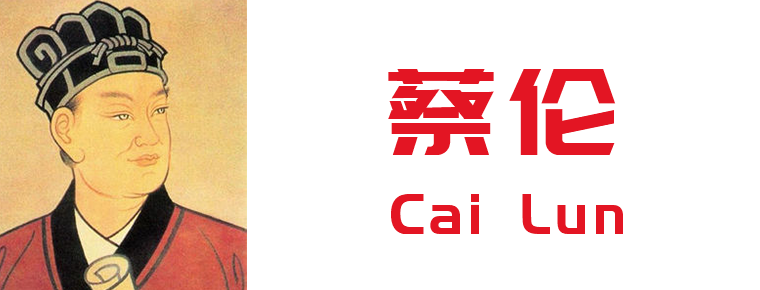2019-02-07

- By ChinaWiki.net
- Chinese Edition
- 2019-04-16
Three Old People of Korean Nationality
Three Koreans are the traditional folk opera form of the Korean nationality in China. It is composed of three actors who perform in the role of the elderly and merge the forms of Korean opera singing, clown drama and interacting drama. Mainly spread in Jilin Province and Longshi City, it is very popular in the local area.
On June 7, 2008, the "Three Elderly Korean" declared by Jilin Province and Long City was listed in the second batch of national intangible cultural heritage list with the approval of the State Council.
Heritage serial number: 773V-80.
historical origin
As early as the Paleolithic Age in primitive society and in Longshi, human beings had multiplied. The Bohai State had built the capital of Xiande Prefecture in Zhongjing, and achieved the heyday of the Bohai State. Hence, Helong has the reputation of a thousand-year-old capital. In this ancient and vibrant land, the rise and development of the Korean folk art "three old people" is bred. Helong City is a Korean community, and the inheritance and development of folk art has a distinct Korean national flavor. In 1869, Korean hungry people ventured across the border to Ho Long Ken wasteland, which had been banned by the Qing government. The form of "three old people" has gradually developed and formed in the process of production and construction, entertainment and ridicule. Following the end of the Anti-Japanese War in 1945, the celebration of literary and artistic performances prevailed, and the performances were especially popular. The "Three Old Men" melted the characteristics of Korean folk singing, clown drama (Erguangdai), rambling and interacting drama. They mainly praised the national spirit and endowed new contents and performances with them. They were warmly welcomed by the audience and gradually developed and prevailed.
Forms of expression
The three old people are mainly speaking, supplemented by singing. They use the dialect of Yanbian area, which has the local characteristics of Yanbian. The actors simulate three types of old people: progressive, middle and backward, perform in the form of argument, praise advanced figures and new things in laughter, criticize wrong ideas and backward phenomena, laugh at and criticize hostile trends. The three old people are plain and humorous. The advanced are righteous and resolute, showing wisdom. The image of the middle school is both right and left. The dialogue is funny. The laggards are easy to go to extremes. Their minds are simple. The three characters complement each other and become interesting. The contradiction is alleviated and plays an educational role. Some of the lyrics are concise and popular, embellished among them, the music has obvious Korean style characteristics, easy to learn and easy to sing, catchy and catchy. Three old people dress up as humorous and funny, actors are not subject to age constraints, often younger people perform more popular, as for men dress up as women, women dress up as men and other images emerge endlessly.
Inheritance significance
The three old people have the characteristics of stereotyped characters and stylized structures, especially the language humor, which has strong local characteristics. The excavation, rescue and protection of the three elders will play a certain role in promoting the improvement and development of the Korean folk art in Yanbian and the enrichment and perfection of the Chinese minority folk art.
Inheritance and protection
In the process of inheritance of the "Three Old Men", the Helong Art Troupe played a main role. The Helong Art Troupe was founded in 1957. Since its establishment, they have been delivering operas to the countryside in the form of "Kangtou Performance" to inherit the "Five Old Arts". "Five Old Art" is "Three Old Men" and "Two Old Men Singing Together". By 2010, the performance form of "Three Old Men" has been passed down for five generations in the troupe, and more than 20 inheritors have been trained. In 2007, "Three Elderly People in Korea" was selected into the national intangible cultural heritage list.

Ask a Question
Your email address will not be published.



0 Questions